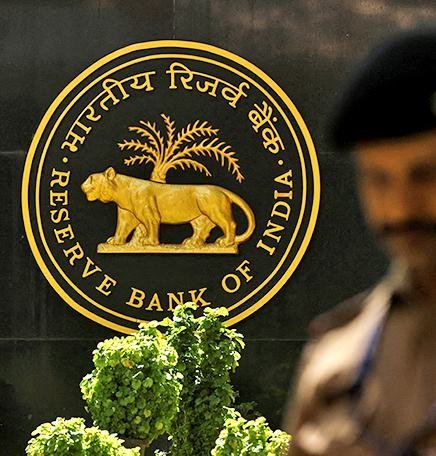Contents
The Reserve Bank of India (RBI) released its ‘Report on Currency and Finance (RCF) for 2023-24’ on 29th July 2024. This report delves into the challenges posed by the rapid adoption of digital technologies in the financial sector, focusing on the theme “India’s Digital Revolution.”
Highlights of India’s Digital Revolution
Global Leadership in Digital Infrastructure:
- Digital Public Infrastructure (DPI): India is leading the global digital revolution, emerging as a frontrunner with its robust DPI, rapidly evolving institutional arrangements, and a growing tech-savvy population.
- Global Rankings: India ranks first in biometric-based identification (Aadhaar) and real-time payments volume, second in telecom subscribers, and third in the startup ecosystem.
- Unified Payments Interface (UPI): UPI has revolutionized the retail payment experience, making transactions faster and more convenient.
- Central Bank Digital Currency (CBDC): The RBI is at the forefront with pilot runs of the e-rupee.
Vibrant Digital Lending Ecosystem:
- Initiatives like the Open Credit Enablement Network, Open Network for Digital Commerce, and the Public Tech Platform for Frictionless Credit are revitalizing digital lending.
- FinTechs are collaborating with banks and NBFCs as lending service providers and operating platforms to facilitate digital credit.
Key Highlights of the RCF 2023-24
Digital Economy Growth:
- Economic Contribution: The RBI projects that the digital economy will constitute 20% of GDP by 2026, up from the current 10%.
- Internet Usage: The Internet user base increased by 199 million over the past three years, with Internet penetration reaching 55% in 2023.
- Data Costs and Consumption: India has the lowest cost per gigabyte of data globally at Rs 13.32 ($0.16) per GB and one of the highest mobile data consumption rates, with an average of 24.1 GB per user per month in 2023.
Digital Payments Surge:
- Growth Rate: Digital payments experienced a Compound Annual Growth Rate (CAGR) of 50% in volume and 10% in value between 2017-18 and 2023-24.
- Transaction Volume: In 2023-24, digital payments, including NEFT, UPI, and card transactions, reached 164 billion transactions worth Rs. 2,428 lakh crore.
- NEFT: Accounted for 49.4% of total retail payment value.
- UPI: Saw a tenfold increase in transaction volume over four years, reaching 131 billion transactions in 2023-24, and currently processes nearly 14 billion transactions monthly.
- Transaction Value: The average per capita transaction value for digital payments rose from Rs. 0.4 lakhs in 2005-06 to Rs. 16.8 lakhs in 2023-24.
Significance of Digitalization in Finance
Next-Generation Banking:
- Digitalization is enabling instant loans in the retail segment through online payments and innovative credit assessment models.
- Innovations are making financial markets more efficient, integrated, and inclusive by:
- Improving access to affordable financial services.
- Enhancing the impact of direct benefit transfers (DBTs) through effective targeting.
- Boosting e-commerce via embedded finance.
External Growth:
- Digitalization is driving growth in India’s services exports and reducing remittance costs.
- Transforming DPI into a global public good, exemplified by RBI’s participation in Project Nexus to enable instant cross-border retail payments by linking domestic Fast Payments Systems (FPS) with those of Malaysia, the Philippines, Singapore, and Thailand.
Challenges Posed by Digitalization
- Customer Protection: Issues related to cybersecurity, data privacy, data bias, and third-party risks.
- Complex Products and Business Models: Emerging technologies can introduce risks that users may not fully understand, including fraudulent apps and mis-selling through dark patterns.
- Human Resource Challenges: Necessitating strategic investments in upskilling and reskilling within the financial sector.
Remittances in India
Global Leadership:
- India is the highest remittance recipient globally, with $115.3 billion in 2023, accounting for 13.5% of the world total.
- Major remittance sources include the Gulf countries and North America.
Economic Impact:
- The remittance-to-GDP ratio increased from 2.8% in 2000 to 3.2% in 2023, surpassing the gross FDI inflows to GDP ratio of 1.9% in 2023.
Future Projections:
- India is set to become the world’s leading supplier of labour, with remittances expected to rise to $160 billion by 2029.
- The working-age population is projected to grow until 2048, enhancing workforce skills.
Way Forward for a Robust Digital Finance Ecosystem
- Regulatory and Supervisory Frameworks: Need to evolve to balance financial stability, customer protection, and competition.
- Digital Personal Data Protection (DPDP) Act 2023: Introduced to safeguard personal data amidst the rapidly evolving digital landscape.
- Balancing Regulation and Innovation: The goal is to foster financial innovations within a safe, robust, and trustworthy ecosystem.


